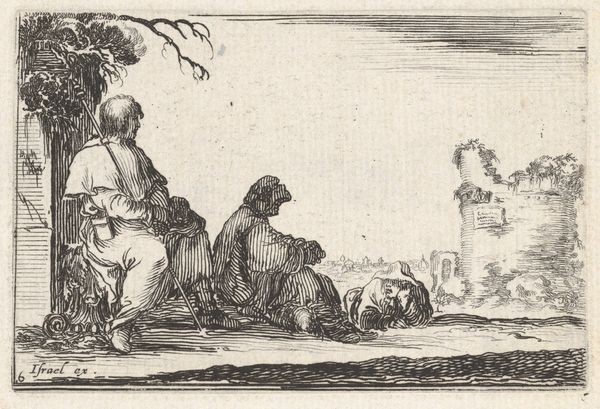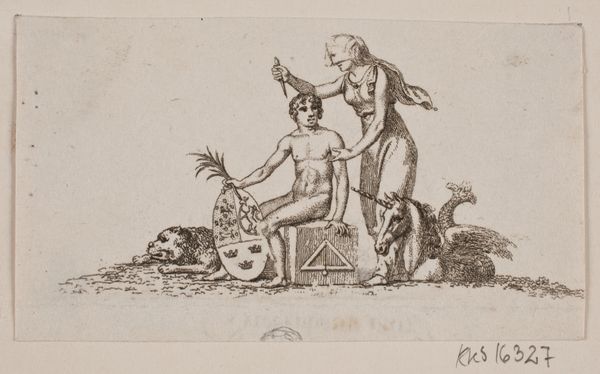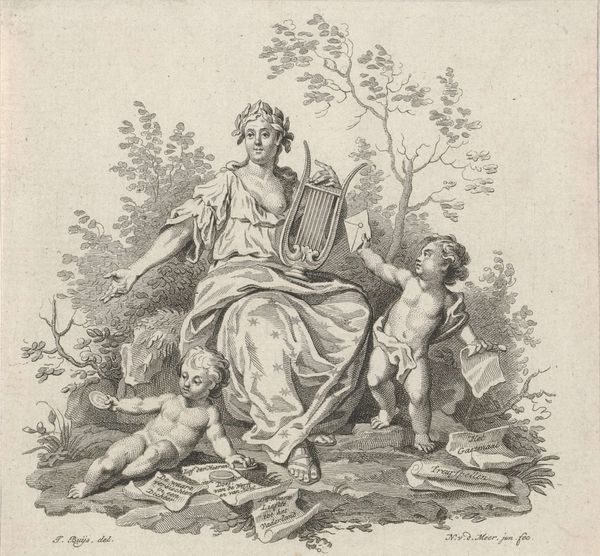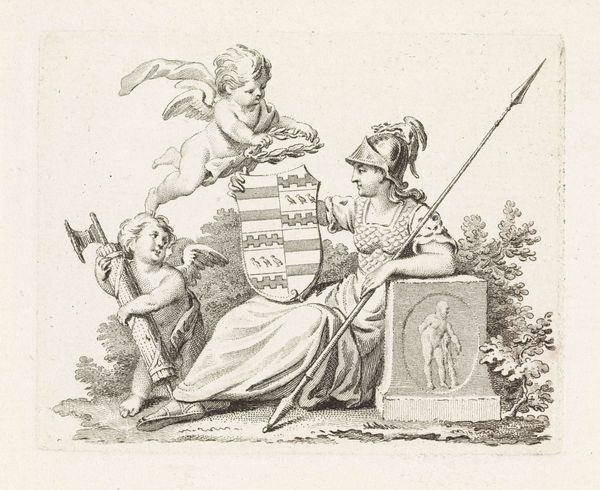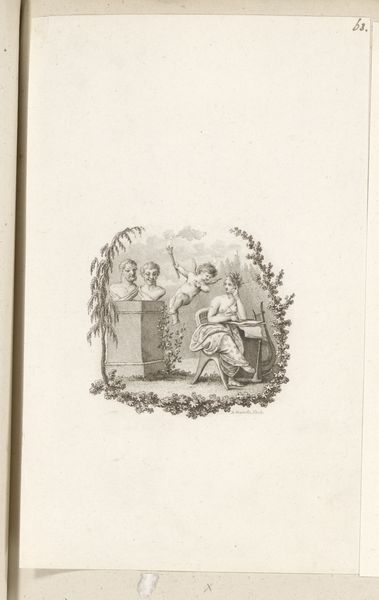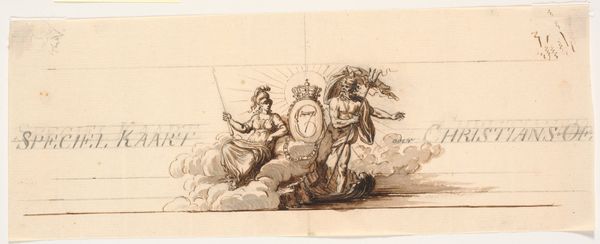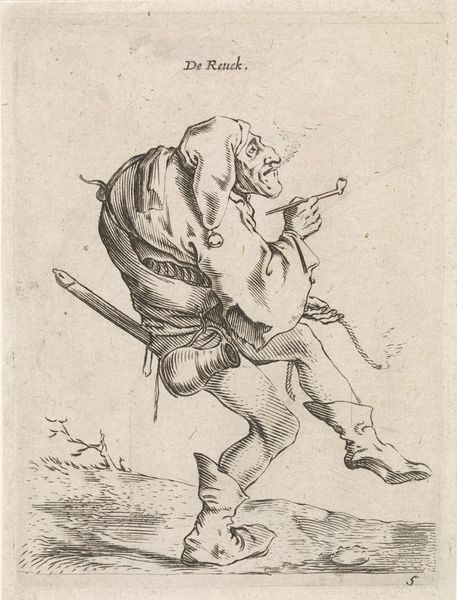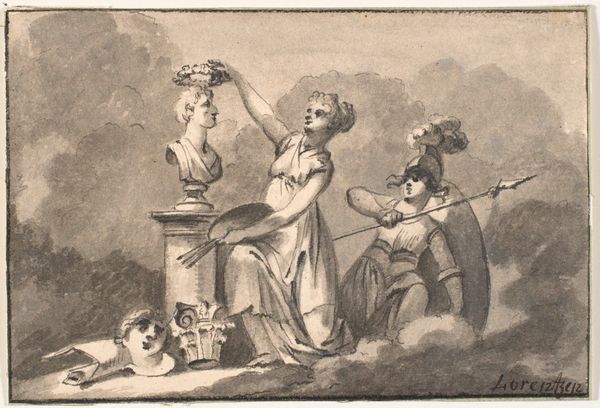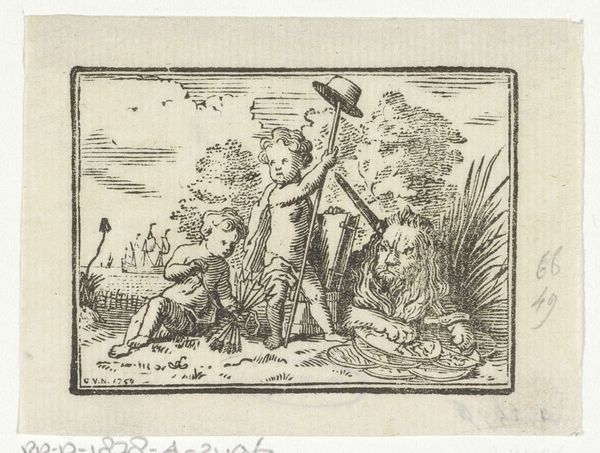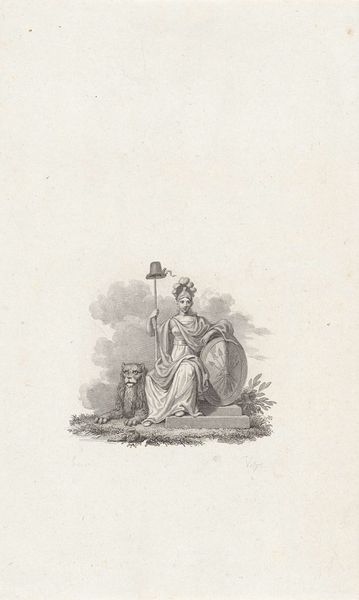
Dimensions: height 126 mm, width 157 mm
Copyright: Rijks Museum: Open Domain
Editor: This is "Wapen van Willem V, prins van Oranje-Nassau," a pencil drawing, with some engraving, made sometime between 1772 and 1843 by Pieter Hendrik Jonxis. There's a really strong allegorical feeling to it. What's your take on it? Curator: Well, let’s consider this within the historical context of Dutch identity. The figure in classical garb holding the banner—it’s more than just symbolism, isn't it? It represents the Dutch Republic, its virtues and aspirations in a rapidly changing political landscape, and that specific Prince. But who is she really protecting? Editor: You mean beyond just, like, national pride? Curator: Exactly! What power structures are being reinforced by representing the nation in this way? And, furthermore, what’s being omitted? Who is excluded from this idealized vision? Consider the role of gender – is the representation of a female figure as the embodiment of the nation empowering, or does it perpetuate patriarchal norms by assigning specific roles and expectations? Editor: That’s a good point. The sword at the bottom is overtly phallic and aggressive, and could mean dominance and subjugation in the colonial territories... Curator: Precisely! The coat of arms becomes not just a symbol of national identity but also a representation of the violence inherent in colonial power. Now, what does the Latin motto, "Honi soit qui mal y pense", reveal about the anxieties of the ruling class during this period? Is it simply a declaration of honor, or does it betray a deeper insecurity about the legitimacy of their power? Editor: I see. So, reading beyond the surface, we can view this drawing as a complex negotiation of power, identity, and social control during a critical period in Dutch history. I wouldn't have thought of it that way originally! Curator: It's about continually asking: who benefits from this image and who is silenced by it? That is the truly interesting conversation that great works can generate, I think.
Comments
No comments
Be the first to comment and join the conversation on the ultimate creative platform.


